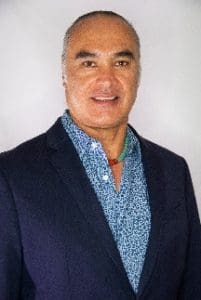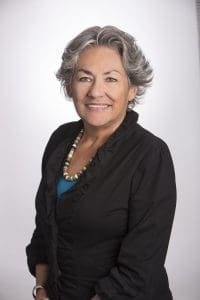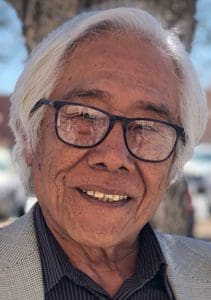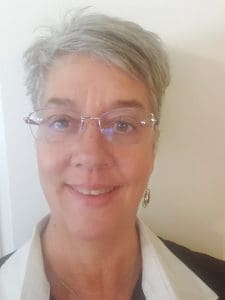Commemorate National Native American Heritage Month with the National Indian Council on Aging’s live webinar, “A Celebration of Native Elders“. Join us November 10, 1-3 p.m. EST, as we recognize the many sacrifices, contributions and achievements of American Indian elders, as well as celebrate our rich and vibrant cultures. The event will include music, multiple raffles, stress-busting tips, simple at-home exercises and more.
The webinar will feature American Indian Development Expert Sherry Salway Black, speaking on the subject of “Native Wealth: So Much More than Money”. You’ll also hear from Sixtus Dominguez, a tribal injury prevention program coordinator at the Albuquerque Area Southwest Tribal Epidemiology Center, who will talk about the importance of stretching and staying active for elders as well as demonstrate chair exercises. Tune in to learn about the new National Native American Veterans Memorial in Washington, D.C., as well as healthy ways to manage stress.
Click the names below to read about our upcoming speakers.
Sixtus Dominguez
 Sixtus Dominguez, MCRP is Jumano Apache from his maternal side, and Rarámuri from his paternal side. He was born in southeastern New Mexico and raised there as well as in southwestern Texas and Chihuahua, Mexico.
Sixtus Dominguez, MCRP is Jumano Apache from his maternal side, and Rarámuri from his paternal side. He was born in southeastern New Mexico and raised there as well as in southwestern Texas and Chihuahua, Mexico.
Sixtus is married into the Coahuiltecan people of Coahuila, Mexico, and south Texas and is a father. Sixtus obtained his bachelor’s degree from the University of New Mexico (UNM) in Native American Studies, magna cum laude, with a minor in studio art.
In 2018 he earned a master’s degree from the UNM School of Architecture & Planning in community and regional planning with a concentration in indigenous planning. He has professional experience in community service, education, and research.
Sixtus is the tribal injury prevention program coordinator at the Albuquerque Area Southwest Tribal Epidemiology Center (AASTEC). His goal is to continue implement focused, community-based injury prevention programs using evidence-based strategies to build capacity in public health within personal, professional, and tribal interests to decrease the burden of unintentional injuries related to falls and motor vehicle accidents among American Indian communities in the AASTEC service area.
Sherry Salway Black
Sherry Salway Black has worked for more than 40 years in American Indian issues at the American Indian Policy Review Commission, Indian Health Service, First Nations Development Institute, the National Congress of American Indians, and as a private consultant. She currently serves on the boards of directors of the Johnson Scholarship Foundation (Vice Chair), First Peoples Fund (Chairperson), Prosperity Now (formerly CFED), and as a trustee for the newly formed Native American Agriculture Fund.
 She also serves on the board of trustees for the National Indian Child Welfare Association. She was appointed by President Barack Obama in 2011 to the President’s Advisory Committee on Financial Capability and in 2013 to the President’s Advisory Committee on Financial Capability for Young Americans.
She also serves on the board of trustees for the National Indian Child Welfare Association. She was appointed by President Barack Obama in 2011 to the President’s Advisory Committee on Financial Capability and in 2013 to the President’s Advisory Committee on Financial Capability for Young Americans.
Past board positions include the Hitachi Foundation (Director Emeritus), Council on Foundations for seven years where she served as treasurer and on the Executive, Governance, and membership committees. She is also a past board member of Trillium Asset Management Corporation, American Indian Business Leaders, Native Americans in Philanthropy and Women and Philanthropy. She served two terms on the board of governors for Honoring Excellence in the Governance of Tribal Nations at Harvard University.
Ms. Black has a Master of Business Administration degree from the University of Pennsylvania and a bachelor’s degree from East Stroudsburg University, where in 2013, she received the Distinguished Alumni Award. In 2016, Ms. Black received a Special Distinguished Leadership Award from the National Congress of American Indians, and in 2019 received the John W. Gardner Leadership Award from the Independent Sector.
She is Oglala Lakota and is originally from South Dakota. She and her husband, Ron Black, a citizen of the Seneca Nation, live in Falmouth, Virginia.
Larry Curley
 Larry Curley is the executive director of the National Indian Council on Aging and a member of the Navajo Nation with over 40 years of experience working in the aging and healthcare fields. He has worked with Congress, other branches of the federal government, and national organizations on aging to develop support for programs affecting elder American Indians.
Larry Curley is the executive director of the National Indian Council on Aging and a member of the Navajo Nation with over 40 years of experience working in the aging and healthcare fields. He has worked with Congress, other branches of the federal government, and national organizations on aging to develop support for programs affecting elder American Indians.
After receiving his master’s degree in public administration at the University of Arizona, along with a certificate in gerontology, Larry worked as a gerontological planner at an Area Agency on Aging in Pima County, Arizona, where he was instrumental in establishing a county public fiduciary program. As a lobbyist in Washington, D.C., he successfully advocated for the passage of Title VI of the Older Americans Act, an amendment which he wrote.
He directed the Navajo Nation’s Head Start program, one of the five largest Head Start programs in the country. Larry has served as a nursing home administrator of a tribal, long-term care facility, as a hospital administrator in northern Nevada, and as a college instructor at the University of Nevada-Reno and Eastern Washington University.
He was named as the assistant dean of the Four Corners region for the Burrell College of Osteopathic Medicine. He’s also served as the public representative on the American College of Physicians Clinical Guidelines Committee, and as the director of program development for the Rehoboth McKinley Christian Health Care Services in northwest New Mexico.
Sue Chapman
 Sue Chapman has been the director of the Senior Community Service Employment Program for the National Indian Council on Aging (NICOA) for seven years. Prior to working at NICOA, she worked as a director for the Workforce Investment Opportunity Act for 16 years and as a job developer with Vocational Rehabilitation for 11 years.
Sue Chapman has been the director of the Senior Community Service Employment Program for the National Indian Council on Aging (NICOA) for seven years. Prior to working at NICOA, she worked as a director for the Workforce Investment Opportunity Act for 16 years and as a job developer with Vocational Rehabilitation for 11 years.
Sue is a certified workforce development professional, and has experience working with individuals with disabilities, at-risk youth and elder workers through workforce programs.

Leave a Reply